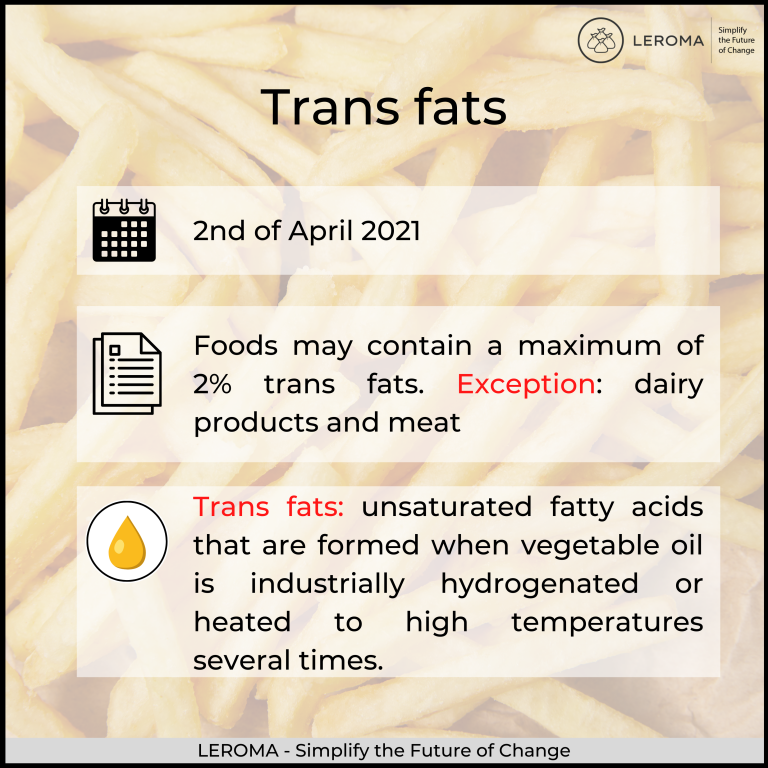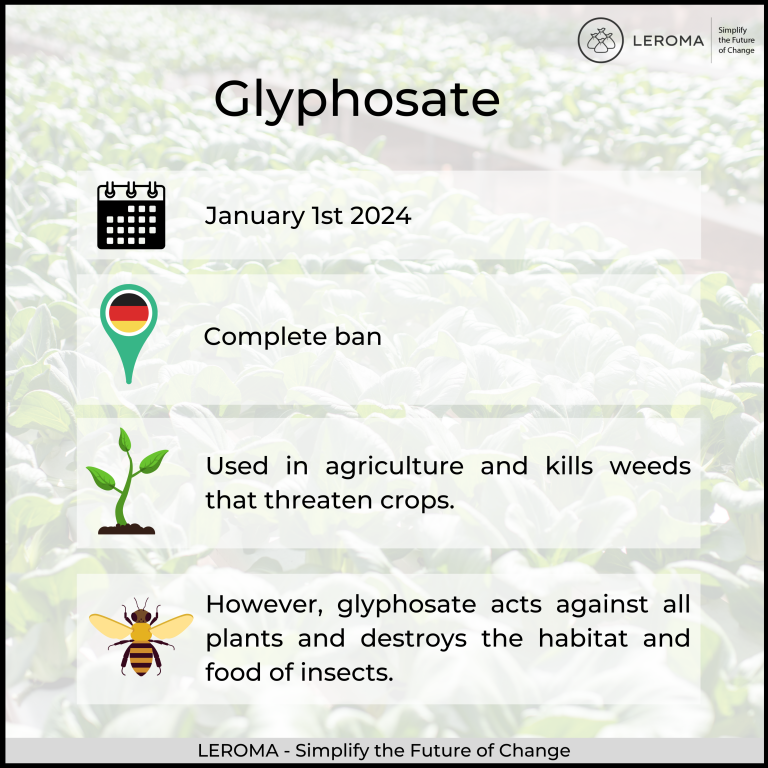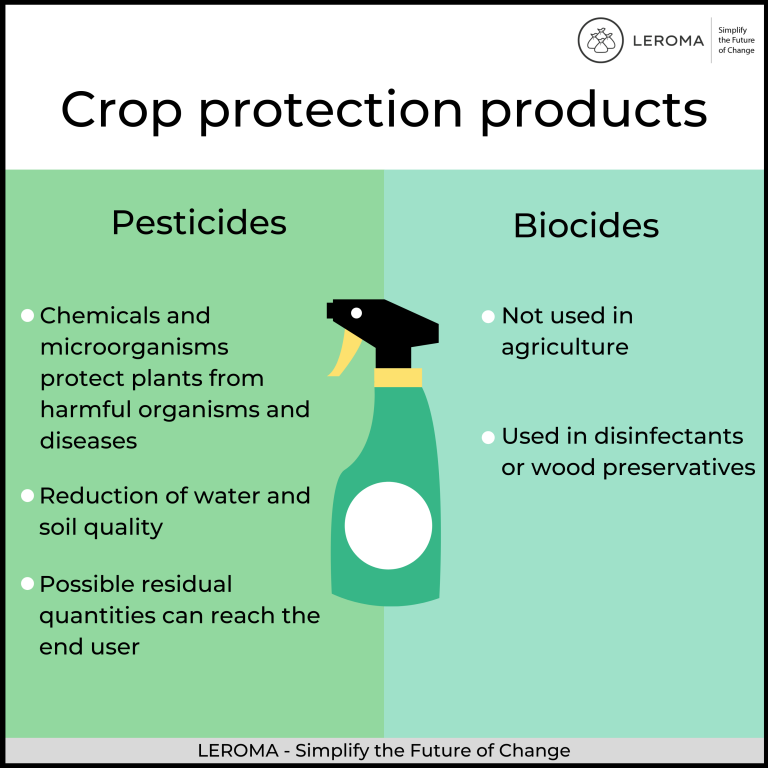More transparency in agriculture through new pesticide regulations
Raw material suppliers as well as food producers regularly have to deal with laws, specifications and guidelines that define what a raw material or end product may and may not contain. This makes sense and is right, after all, the food produced should serve human nutrition and therefore contain as few or no harmful substances as possible. However, new findings and research results ensure that laws are constantly being reviewed and amended, so it is not always easy to keep track.
Only on April 2 of this year, for example, a law came into force that stipulates that foods may contain a maximum of two percent trans fats. Trans fats are unsaturated fatty acids that increase the level of bad cholesterol in the blood and are produced, among other things, when vegetable oil is industrially hydrogenated or heated to high temperatures several times. Dairy products and meat, in which the fats are naturally present, are excluded from the law.
In this article, however, we would like to draw attention primarily to new regulations on pesticides, because these affect not only the producers of raw materials, but also food manufacturers who use pesticide-treated strawberries, cherries or cucumbers for their products.
"Pesticides" refers to both plant protection products and biocides. Plant protection products are chemicals and microorganisms designed to protect plants from harmful organisms and diseases. However, they can affect the quality of water and soil and the biodiversity of the environment. In addition, small residual amounts may remain in the treated raw materials and thus reach the end user. Biocides also combat harmful organisms, but are used outside agriculture, for example in disinfectants or wood preservatives.

In the following, we take a look at a relatively new pesticide regulation that came into force last year.
Since June 4, 2020, new maximum residue levels for chlorate in food have been in effect in the EU. Chlorates are salts of chloric acid that have been used as active ingredients in pesticides. If too much of it is consumed, it can damage the kidneys or inhibit oxygen uptake in the blood as well as iodine absorption. The latter leads to thyroid dysfunction, because the thyroid gland needs iodine to produce important hormones. For this reason, the use of pesticides containing chlorate has been banned throughout the EU since 2010.
Nevertheless, chlorate residues can still be found, especially in processed foods. The reason for this is contact with water during processing that has been disinfected with chlorine-containing chemicals and microorganisms, as chlorate can be produced as a by-product.
Over a longer period of time, consumers should not ingest more than three micrograms per kilogram of body weight daily. In addition, an acute reference dose of 36 micrograms per kilogram of body weight has been established. In the risk assessment of pesticides, the acute reference dose refers to the amount of substance that can be ingested with food within 24 hours or less without posing a noticeable health risk. In the case of chlorate, the above-mentioned adverse health effects may occur if these levels are exceeded. The maximum residue levels for chlorate have been set individually for foods of all types, such as fruits, vegetables, oilseeds, cereals, spices or products of animal origin.
We were made aware of this regulation by a customer who recently had to dispose of several tons of spices because they contained more chlorate than permitted under the new specifications. Valuable raw materials and resources end up in the garbage can because food that deviates from specified guidelines is not allowed to be sold. To counteract this, we at LEROMA would like to inform you with this and other articles now and in the future about new laws or developments that could have an impact on your products and the production of your raw materials. That's why this week we've been looking at upcoming pesticide regulations that we'd like to give you a brief update on:
Glyphosate
The German cabinet has decided that the use of the active ingredient glyphosate in plant protection products should be reduced. Its use will be completely banned in Germany from January 1, 2024. Glyphosate is a chemical compound that is sprayed before or after crops are grown to kill weeds that compete with the crop. The active ingredient inhibits the action of vital enzymes in plants. However, it is a total herbicide, meaning it works against all plants, not just certain ones. As a result, glyphosate destroys the habitat and food source of many insect and bird species, negatively impacting the ecosystem and diversity.
Insects have many functions and also play a role in agriculture, decomposing crop residues among other things, thus maintaining soil fertility. The future ban is therefore primarily aimed at insect protection and is intended to contribute to sustainable and gentle agriculture and to promote integrated pest management, i.e. the use of chemical pesticides is to be limited to what is necessary and natural methods of pest control are to be preferred.

In addition, a World Health Organization study in 2015 concluded that glyphosate can cause cancer as well as DNA and chromosomal damage in both animal and human cells.
More transparency in the approval of new active ingredients
Since March 27 of this year, suppliers of novel foods, additives and pesticide active ingredients must make scientific information more readily available because a citizens' initiative has called for greater transparency in the approval of pesticides. Data and information accompanying an application for approval will be made available to the public by the European Food Safety Authority in an online register. This change in the law shows that consumers have concerns about the health risks of food treated with pesticides.
Multiple residues
There are countless active ingredients in crop protection products whose maximum residue levels are regulated by law. For active ingredients without separate regulation, a limit of 0.01 kilogram per kilogram applies, which may be contained in all foodstuffs at most. However, nowadays several different pesticides are used as needed to target specific pests, resulting in multiple residues in food. As long as none of the individual active ingredients exceeds its maximum level, this is permitted by law, although in individual cases up to 30 different pesticides have been detected in a product. Meanwhile, only 0.0005 milligrams are allowed in total per liter in drinking water.
We assume that the trend toward healthy and natural foods, as well as growing environmental awareness and insect protection, will lead to the use of chemical pesticides being reduced as far as possible in the future as well, and that legal regulations will soon be created for multiple residues, for example.
Farmers and food producers should change now and turn to natural alternatives to pesticides and biocides even before new regulations come into force. One way to control pests is to introduce beneficial insects, such as predatory mites and ladybugs, which eat the harmful organisms. When settling beneficial insects, however, it is important to tolerate the first pests, otherwise ladybugs and co will not find food and will not stay.
It is also possible to take advantage of the pheromones, the scents of the pests with which they communicate, for example, by distributing scent traps with female sex hormones, which trap or confuse the males and thus hinder mating. In addition, there are biological plant protection agents, such as good bacteria, which strengthen the roots of crops so that they can better withstand external influences such as pests or drought.
Converting proven processes can be costly and take a lot of time, but if producers of raw materials look for alternatives now, they will be prepared for future regulations and will not be under pressure.
Let’s simplify the future of change!





